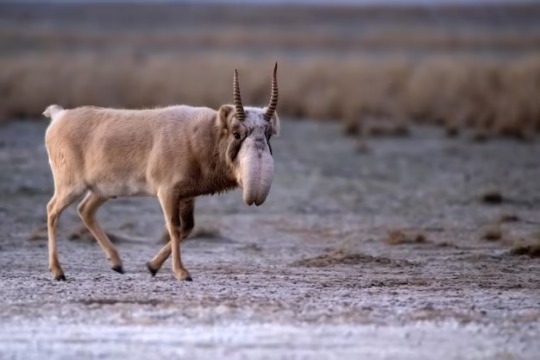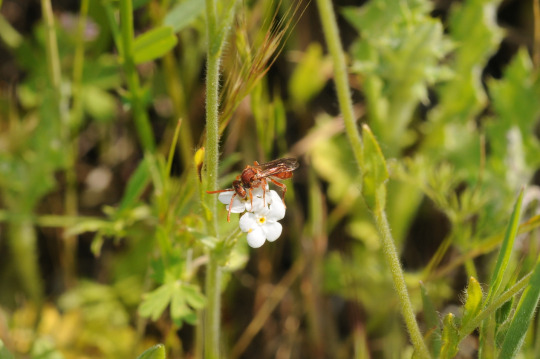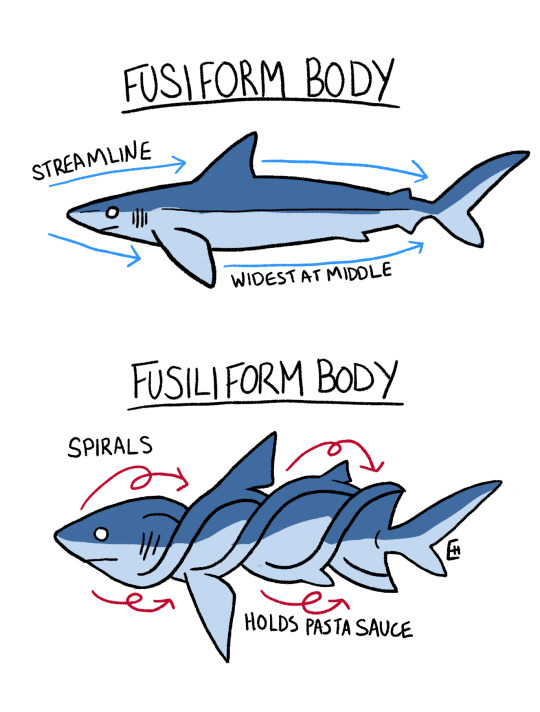#biology
Text

It's salamander season again.
#spotted salamander#salamander#salamander eggs#eggs#egg mass#pond#poo#vernal#vernal pond#vernal pool#Ambystoma maculatum#nature#naturalist#sketch#watercolor#pencil#sketchbook#wildlife#animal#amphibian#Ambystomatidae#science#biology#pond life
107 notes
·
View notes
Text
How Moths Confuse Bats

When your predators use echolocation to locate you, it pays to have an ultrasonic deterrence. So, many species of ermine moths have structures on their wings known as tymbals. (Image credit: Wikimedia/entomart; research credit: H. Mendoza Nava et al.; via APS Physics)
Read the full article
#acoustics#aeroelasticity#biology#buckling instability#fluid dynamics#moths#physics#science#ultrasound
39 notes
·
View notes
Text
Researchers have revealed the regulatory mechanism of a specific protein that plays a key role in balancing the immune response triggered by viral infections in mammal cells. These findings could help drive the development of antiviral therapies and nucleic acid medicines to treat genetic disorders. The research is published in the journal Nucleic Acids Research.
For cells to protect themselves from viral infections, a series of immune responses typically occur, including programmed cell death called apoptosis and interferon signaling. While apoptosis is a normal process, that occurs with or without the presence of viral molecules, following a cascade of steps to end with the death of a cell—which might not sound advantageous to the host—it can help prevent the reproduction of abnormal cells, including those infected by viruses, and eliminate them from the body.
Continue Reading.
44 notes
·
View notes
Note
saw in your bio you’re researching infectious reptile diseases—that sounds cool as hell! which diseases specifically?
My research is in herpesviruses! I can’t give you the exact species I’m studying, but my interest is in how herpes viruses have been evolving alongside reptiles as well as mammals for millions of years.
Even among some very crafty pathogens, herpes stands out as the single most cunning family of viruses in the world (imo at least). They can evade immune systems, control populations, and basically bend ecosystems to their will. All without having the presence of mind to “intend” to do any of that. Herpes viruses are insanely interesting
54 notes
·
View notes
Text


Saiga antelope (Saiga tatarica)
Saiga don’t only look weird, but are found in the last place you would expect antelope to be- the cold, dry Eurasian steppe. Their large nose helps filter out dust and warm air before it reaches their lungs, and they also develop a warm, grey-brown coat in the wintertime. During the last ice age, saiga antelope were found across the cold northern steppe, from Britain and Mongolia to Alaska. Unfortunately, they are now critically endangered, found only in a few refuges in Kazakhstan and the surrounding countries.
#markhors-menagerie#animal facts#animals#biology#fun facts#ungulates#even toed ungulates#ruminants#bovidae#antelope#saiga antelope
31 notes
·
View notes
Text

Leaf Katydids (Subfamily Phaneropterinae)
#inaturalist#naturalist#nature#ecology#zoology#biology#insect#insects#bug#bugblr#entomology#bugs#photography#nature photography#wildlife photography#hawks photos#insectblr#bugposting#katydid
31 notes
·
View notes
Text
Not enough people know that vegetables are a human construct
#not the medical kind#Nessie on drugs#biology#evolutionary biology#evolution#science#botany#cooking#cooking advice#cooking tips#vegetarian#vegan#vegetable#vegetables#r/196#196#r/196archive#/r/196#rule#meme#memes#shitpost#shitposting
52 notes
·
View notes
Text


None of my teachers are abiding by dead week, but my insomnia is finally on the same page with me so all nighters are easy. I’m confident in my stats class, and will be better for my bio class once I get through the up coming quizzes
#college#student#chemistry#studyblr#biology#biochemistry#study aesthetic#study desk#study motivation#romanticizing school#romanticizing stem#romanticizing science#romanticizing college#stem#stem student#stem academia#stem aesthetic#stem studyblr#stemblr#study blog#studyspo#studying#stress#romanticizing finals#finals#university
23 notes
·
View notes
Text
A new analysis of fossilized vertebrae discovered in western India has revealed the existence of a giant snake species that may have measured some 11 to 15 meters (36.1 to 49.2 feet) in length when fully grown.
The researchers behind the work, from the Indian Institute of Technology Roorkee, acknowledge some uncertainty in their estimations, but they suggest the newly identified reptile they've named Vasuki indicus may have equaled the size of the largest snake in history, the Titanoboa, which died out some 58 million years ago.
Compared with snake species still slithering around today, V. indicus is way ahead. As far as verified measurements go, the longest living snake right now measures a paltry 7.67 meters.
Continue Reading.
41 notes
·
View notes
Text
I see a lot of talk about common species like sharks and whatnot when it comes to marine life which is cool and good but you know what I don’t see people talking about? the batfish

this is a polka dot batfish. look at his cute legs and sweet little face. absolutely incredible. such a revolutionary creature. I fucking love batfish and you should too
#batfish#marine life#marine animals#marine biology#ocean life#sea animals#sea creatures#sea life#fish#fishblr#sea critters#fishes#animals#sea#ocean#aquatic life#aquatic#biology
30 notes
·
View notes
Note
HI oh my goodness so I'd like to ask if you're willing to continue on the epidemiology media vein-- I very much enjoyed spillover and would love more recs if you're willing! Am a bio student interested in disease :>
I’ve probably recommended it like a hundred times on this blog but I can’t say enough good things about “This is your brain on parasites” by Kathleen McAuliffe. It explores how parasites can affect human and animal behavior and it will absolutely wrinkle your brain.
The most classic epidemiology book I’ve ever read was “The Ghost Map” about the cholera outbreak in 1850’s London and I’d definitely recommend that book as well! If I were ever going to do a drunk history episode that would be my selection. It’s a great story and a triumph of early medicine
32 notes
·
View notes
Text


Nomad Bees (Genus Nomada)
#inaturalist#naturalist#nature#ecology#zoology#biology#photography#nature photography#wildlife photography#hawks photos#insect#insects#bug#bugblr#entomology#bugs#hymenoptera#bugposting#arthropods#bee#bees#nomad bees
18 notes
·
View notes
Text

Cord Progression
Details revealed of the regions and timing of multiple sclerosis progression from single cell analyses in a mouse model (experimental autoimmune encephalomyelitis) and in post mortem MS patient spinal cords
Read the published research article here
Image from work by Petra Kukanja and Christoffer M. Langseth, and colleagues
Laboratory of Molecular Neurobiology, Department of Medical Biochemistry and Biophysics, Biomedicum, Karolinska Institutet; Science for Life Laboratory, Department of Biochemistry and Biophysics, Stockholm University, Solna, Stockholm, Sweden
Image originally published with a Creative Commons Attribution 4.0 International (CC BY 4.0)
Published in Cell, March 2024
You can also follow BPoD on Instagram, Twitter and Facebook
7 notes
·
View notes
Text
LITTLE GUY SPOTTED


44K notes
·
View notes
Text
Scientists at UC Riverside have demonstrated a new, RNA-based vaccine strategy that is effective against any strain of a virus and can be used safely even by babies or the immunocompromised.
Every year, researchers try to predict the four influenza strains that are most likely to be prevalent during the upcoming flu season. And every year, people line up to get their updated vaccine, hoping the researchers formulated the shot correctly.
The same is true of COVID vaccines, which have been reformulated to target sub-variants of the most prevalent strains circulating in the U.S.
This new strategy would eliminate the need to create all these different shots, because it targets a part of the viral genome that is common to all strains of a virus. The vaccine, how it works, and a demonstration of its efficacy in mice is described in a paper published today in the Proceedings of the National Academy of Sciences.
“What I want to emphasize about this vaccine strategy is that it is broad,” said UCR virologist and paper author Rong Hai. “It is broadly applicable to any number of viruses, broadly effective against any variant of a virus, and safe for a broad spectrum of people. This could be the universal vaccine that we have been looking for.”
Continue Reading.
14K notes
·
View notes
Text

know the difference!
27K notes
·
View notes